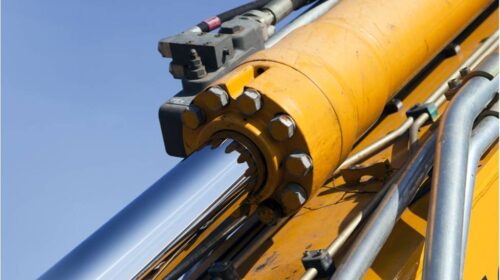Global Anti-wear Additives Market Forecast 2021
Market Overview
The global anti-wear additives market size is expected to reach over USD 834.8million by the end of 2028 at a CAGR of 2.1%.
Anti-wear additives, also called AW additives, are lubricant additives used to prevent metal surfaces between gear parts. It reacts with metal surfaces under ambiance and high temperature, forming a protective additive-derived layer between the metal surfaces, hence reducing friction and controlling wear. These additives are generally phosphorous based, with ZDDP (zinc dialkyl dithiophosphate) being the most commonly used in engine oils and thus are the primary sources of phosphorous in engine oils. The other anti-wear additives are tricresyl phosphate and other phosphate esters.
Market Dynamics
The growth of anti-wear additives is attributed to the continuous use of these materials across the end-use industry, such as automotive, metalworking, construction, and others. The growing construction industry in emerging economies is expected to create an opportunity for the market players to develop and launch new anti-wear additive products and enhance their position in the market. In addition, automotive is one of the major factors for the growth of the market.
Segment Analysis
By Type
-
- ZDDP: Zinc dialkyl dithiophosphate lubricant additives (ZDDP) is a zinc-based anti-wear additive used to prevent premature engine wear and provides oxidation and corrosion protection.
By Application:
-
- Engine Oil:Engine oil consists of base oil and additives used to reduce the engines’ wear and tear and increase fuel efficiency.
-
- Hydraulic Oil: Hydraulic oils have various superior properties such as high-temperature stability and long life compared to other oils, driving the growth of this segment.
-
- Metalworking Fluid: These fluids are used in various machinery operations such as construction and other industries.
-
- Others: The other segments include transmission fluids, gear oils, and others.
By End-use Industry
This segment is classified into automotive, construction, metalworking, and others.
-
- Automotive:This segment is expected to dominate the market throughout the forecast period. Anti-wear additives are commonly used in gear oil, engine oil, hydraulic fluid, transmission fluid, and others to prevent the metal components. The growth of the automotive industry in recent years has seen a major rise across the globe. Automobile production across the globe surpassed 92 million units in 2019; this is mainly due to the increased production in emerging economies, such as China, India, and Mexico. In addition, the advancements in the automotive and heavy-duty industries to fulfill consumers’ current demands and future requirements have led to the development of innovative and safe components for use in automobiles. Moreover, the sale of commercial, passenger and other lightweight vehicles has increased by 7 to 9% from 2017 to 2019.
-
- Construction:the construction end-use industry segment is expected to grow at a moderate pace during the forecast period. With increasing investments in residential construction and infrastructure development, the growing construction industry in developed nations is likely to drive the growth of the anti-wear additives market.
-
- Others:The others segment include industrial applications such as mining.
By Region
-
- North America: The demand from the construction industry drives the regional market growth.
-
- Europe: It is A well-established automotive market.
-
- Asia-Pacific: It is the largest and fastest-growing regional market
-
- Latin America: Latin America is a high growth potential automotive market with an expanding customer base and production.
-
- Middle East & Africa: Growing investments in infrastructure development of the region are fueling the demand for anti-wear additives in the region.
Covid Impact:
The pandemic has created a significant impact on the various end-use industry of the anti-wear additives market, including automotive, metalworking fluids, construction, and others. The outbreak of Covid-19 has resulted in a lockdown across regions, border restrictions, and breakdown of transportation networks; this is projected to significantly impact the chemicals and materials supply chains, international trade, and manufacturing operations across the world. The automakers planned to halt the production in North America to slow the spread of the Covid-19 virus. However, currently, the region is the global epicenter of the outbreak, with the daily number of confirmed cases outstripping the number in China. This is causing a marked effect on the economy as well as society and leading to massive economic disruption, with the automotive industry at the center of this turmoil.
Request a sample

